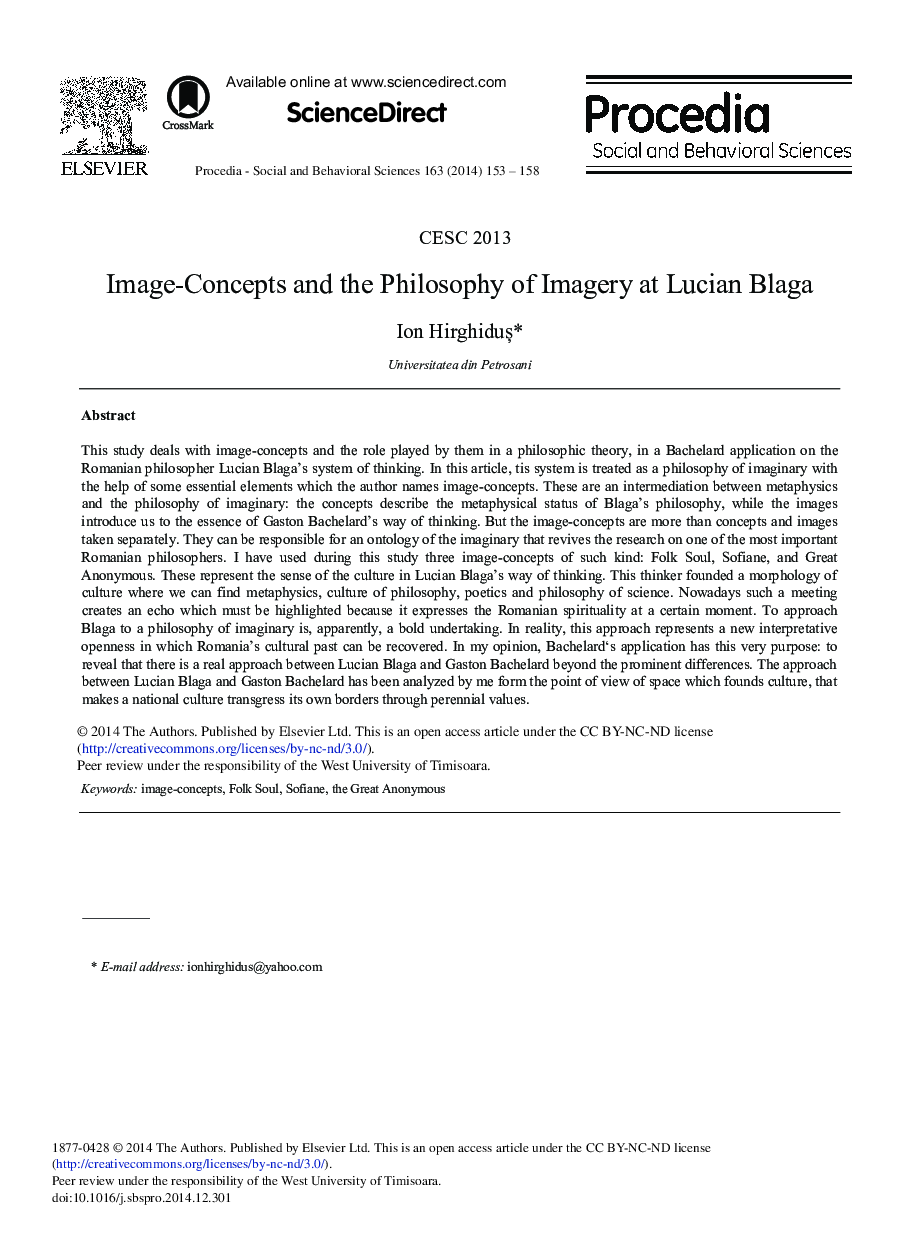| Article ID | Journal | Published Year | Pages | File Type |
|---|---|---|---|---|
| 1112475 | Procedia - Social and Behavioral Sciences | 2014 | 6 Pages |
This study deals with image-concepts and the role played by them in a philosophic theory, in a Bachelard application on the Romanian philosopher Lucian Blaga's system of thinking. In this article, tis system is treated as a philosophy of imaginary with the help of some essential elements which the author names image-concepts. These are an intermediation between metaphysics and the philosophy of imaginary: the concepts describe the metaphysical status of Blaga's philosophy, while the images introduce us to the essence of Gaston Bachelard's way of thinking. But the image-concepts are more than concepts and images taken separately. They can be responsible for an ontology of the imaginary that revives the research on one of the most important Romanian philosophers. I have used during this study three image-concepts of such kind: Folk Soul, Sofiane, and Great Anonymous. These represent the sense of the culture in Lucian Blaga's way of thinking. This thinker founded a morphology of culture where we can find metaphysics, culture of philosophy, poetics and philosophy of science. Nowadays such a meeting creates an echo which must be highlighted because it expresses the Romanian spirituality at a certain moment. To approach Blaga to a philosophy of imaginary is, apparently, a bold undertaking. In reality, this approach represents a new interpretative openness in which Romania's cultural past can be recovered. In my opinion, Bachelard‘s application has this very purpose: to reveal that there is a real approach between Lucian Blaga and Gaston Bachelard beyond the prominent differences. The approach between Lucian Blaga and Gaston Bachelard has been analyzed by me form the point of view of space which founds culture, that makes a national culture transgress its own borders through perennial values.
